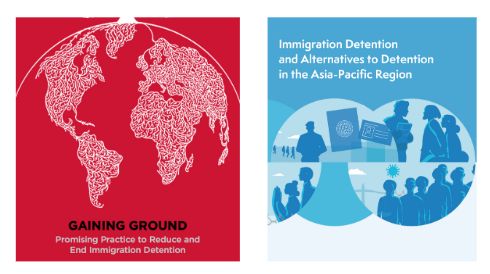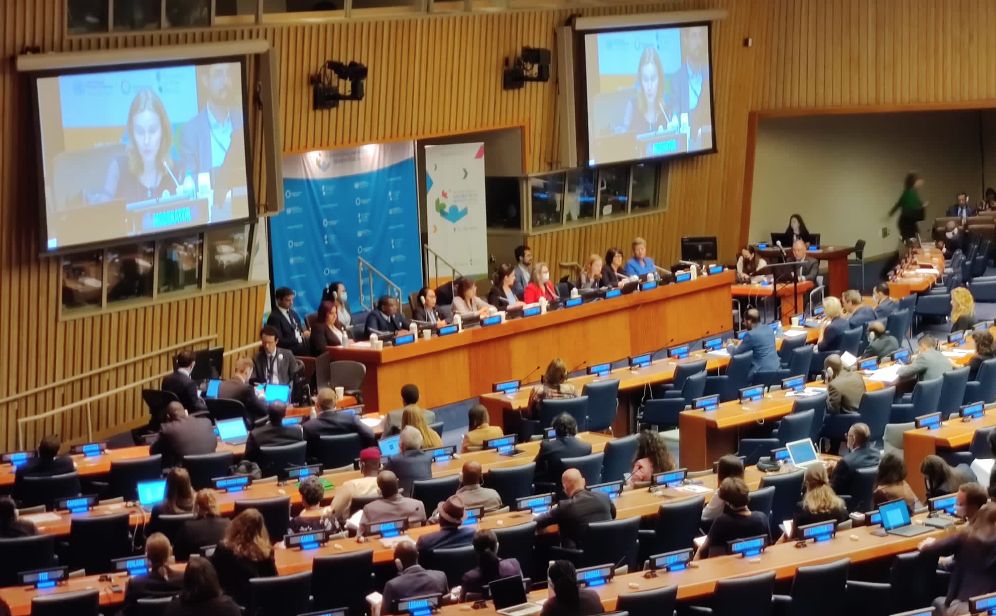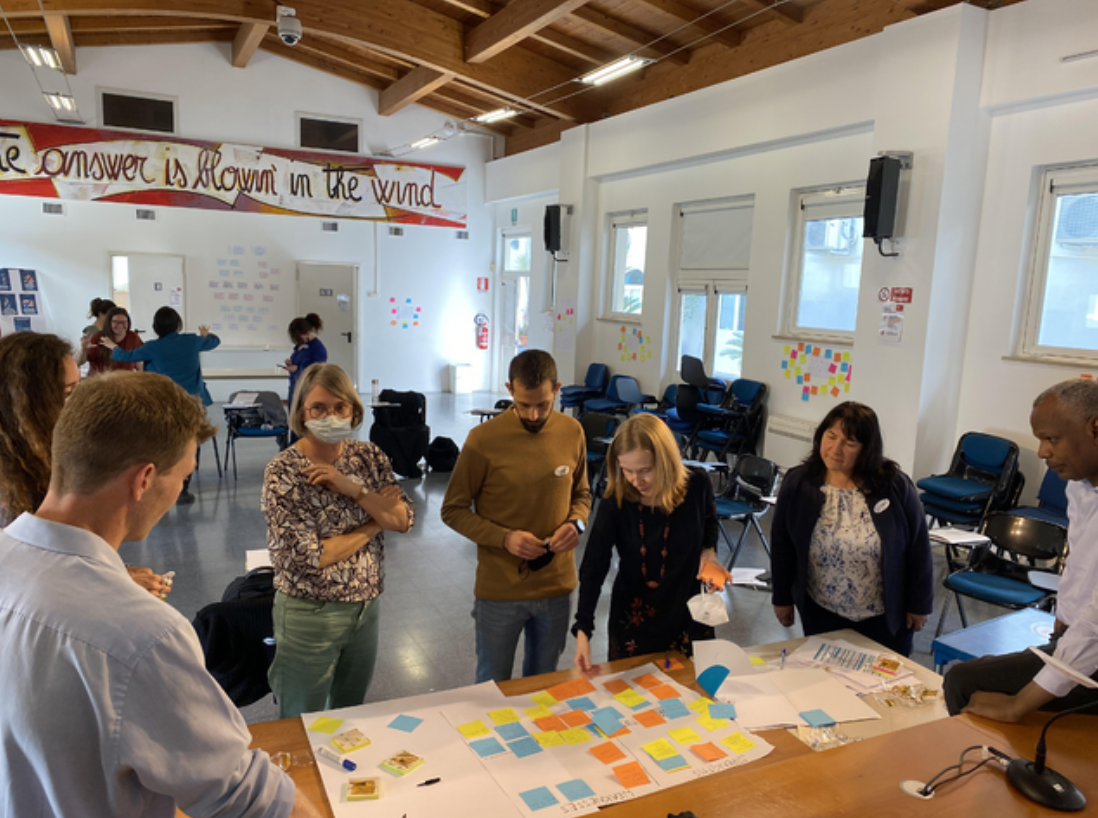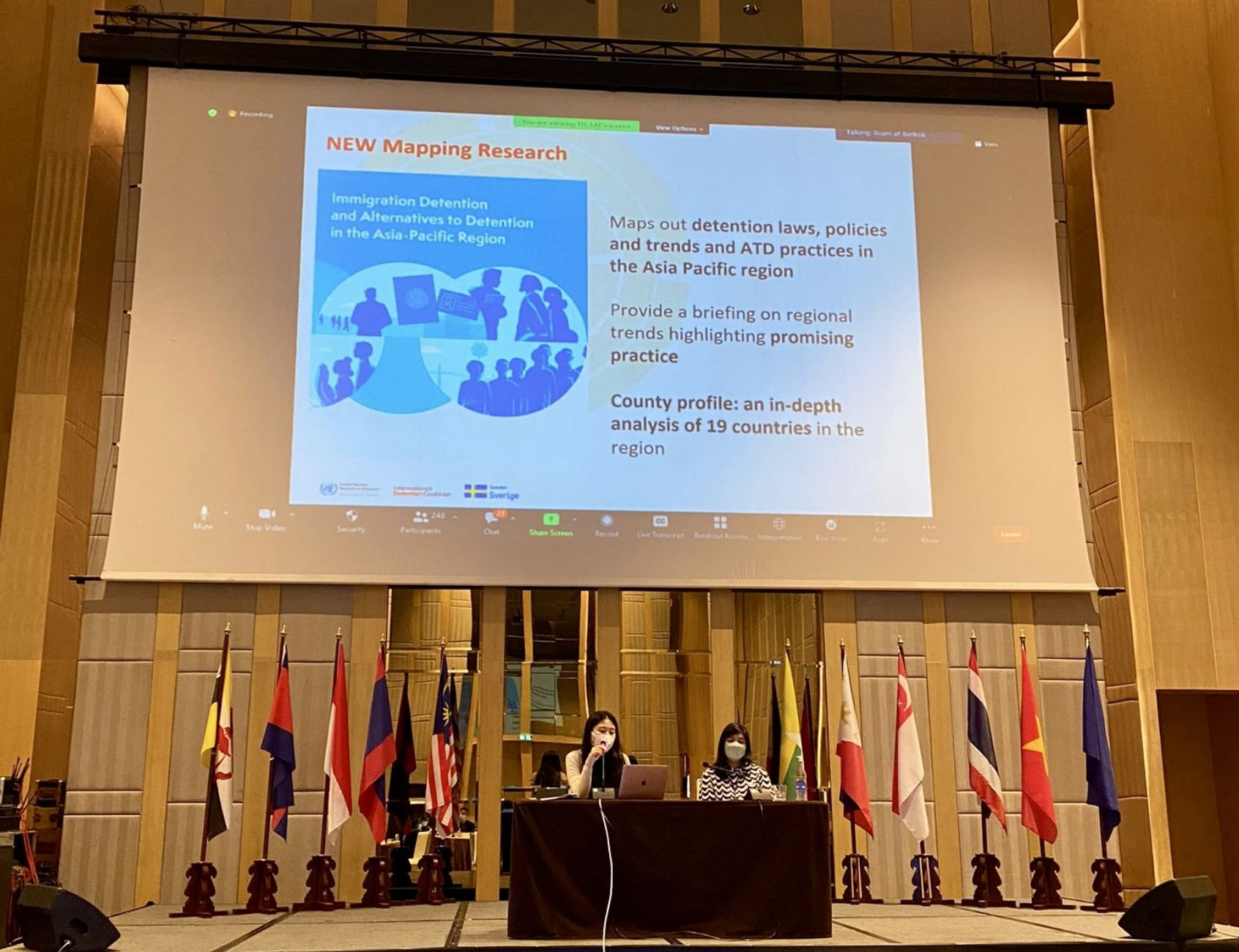Alternatives to detention in transit migration contexts
In Mexico, just one year after the publication of the General Law on the Rights of Children and Adolescents (2014), IDC promoted a pilot program that saw the release of unaccompanied children and adolescents who were deprived of their liberty in immigration detention centres and their reception and care in community-based civil society programs. In collaboration with the National Migration Institute and the organizations Casa Alianza and Aldeas Infantiles, this experience was pioneering as a strategy to shift perspectives and open possibilities for structural change. It provided evidence to strengthen the advocacy that later, in 2020, enabled legislative reform of the Migration Law to prohibit the detention of children and adolescents for migration-related reasons. This is particularly important considering that Mexico is a country that traditionally receives transit migration.
IDC has found that there is evidence from other countries in the world where they have implemented alternative to detention (ATD) measures aimed at various populations -such as women, families or refugees-, in migration contexts commonly referred to as "transit" or that could be applied in contexts with these characteristics. Regardless of the political category assigned to the migratory context (transit or destination), IDC promotes the adoption of ATD in response to international commitments to move towards ending immigration detention. To this end, IDC acknowledges and promotes the efforts of governments and civil society to build migration governance systems that guarantee dignity and human rights.
"Most critically, immigration detention has detrimental effects on individuals, communities and entire societies."
Why is it important to systematise and share good practices of ATD around the world?
While there has been progress in adopting ATD around the world, immigration detention continues to be a widespread response to international migration, not only in Mexico, but in other countries as well. Disseminating the actions that governments can take in a manner that respects human rights, while strengthening community participation and contributing to transparency and efficiency in the use of public resources, is a task that seeks to inspire stakeholders in charge of protecting the rights of people on the move.
Although there are specific challenges and common questions about the application of ATD in contexts with "transit migration", IDC has worked on research that helps to clarify concepts, myths, arguments and experiences in order to provide useful elements to advance its implementation in these contexts. On the one hand, it allows us to break down some key concepts (such as "transit migration" itself) as well as the factors that encourage the use of immigration detention. In addition, it provides answers to the main questions related to the application of ATDs in contexts with "transit migration" and some considerations on how and when ATDs can be useful as a strategy for those who work in advocacy and design or operation of public policies that prioritise freedom.
To this end, IDC has explored experiences in Australia, Bulgaria, Cyprus, Egypt, France, Greece, Jordan, Libya, Malaysia, Mexico, Poland, Switzerland and Thailand and systematized the most relevant ones.
To learn more:
We invite you to read our publication Alternatives to Immigration Detention in Transit Migration Contexts for more practical examples and recent developments in the field of ATD, in order to highlight promising practices and encourage further progress in this area.
Immigration detention as an exceptional measure of last resort
Since the adoption of the Universal Declaration of Human Rights in 1948, the right to personal liberty has been taken up in various international treaties. This right is one of the main frameworks for addressing the arbitrary detention of people on the move.
As part of migration management, governments around the world carry out various actions as part of state policy, one of which is detention.
IDC has documented the various detrimental effects of immigration detention, including the criminalisation of migrants (including those in need of international protection), psychosocial effects on individuals and their communities, human rights violations, as well as high costs to governments.
"Irregular migration is not a choice of the people, but a consequence of the policies and actions of the state.”
Therefore, international standards support the elimination of immigration detention, and one of the strategies to achieve this is to limit its application only as an exceptional measure of last resort. This principle has been taken up in various countries and is enshrined in their legal frameworks; however, there are several challenges in its implementation.
How can the principle of last resort for immigration detention be applied?
In order to ensure that states gradually eliminate and put a complete end to the use of immigration detention, there are some key advocacy actions that can be taken up by legislative actors, public officials or civil society organisations themselves.
Several international instruments prohibit immigration detention for various groups, such as children and adolescents, asylum seekers or people in vulnerable situations, such as pregnant women, nursing mothers, elderly people, people with disabilities, LGBTQI people, or survivors of human trafficking, torture and other serious violent crimes.
In the Global Compact for Safe, Orderly and Regular Migration, States have committed to prioritise non-custodial alternatives consistent with international law, and to adopt a human rights-based approach to any detention of migrants, where detention is only used as a last resort.
The exceptionality of detention must be based on an individual and context-specific assessment, an analysis of all options, and the decision to opt for detention must be lawful and demonstrate a legitimate aim.
Based on the experiences of its members and partners, IDC set out to compile promising practices in the application of the principle of last resort around the world, including examples of national legislation and its possible effect on the use of detention as an immigration control measure.
Find out more:
We invite you to read our briefing paper – Immigration Detention as an Exceptional Measure of Last Resort – to learn more about the international standards in which the principle of last resort is raised, as well as some promising practices, in order to encourage further progress on this issue.
An interview with IDC's Carolina Gottardo

This interview was first published by the European Programme for Integration and Migration (EPIM)
In this Civil Society Spotlight interview, we hear from Carolina Gottardo, the Executive Director of International Detention Coalition (IDC). Carolina guides the global network of 275+ organisations, individuals, and community members from around the world to advocate for the human rights of those affected by immigration detention. Through strategic collaboration with civil society, UN agencies, and governments at various levels worldwide, IDC works to build movements and shape legal, policy, and procedural changes aimed at reducing and ultimately ending immigration detention and promoting rights-based alternatives globally.
Carolina is a migrant lawyer and economist with over 20 years of human rights experience specialising in migration, asylum, and gender. Carolina has previously held leadership roles at the Jesuit Refugee Service Australia and Latin American Women’s Rights Service, among others.
EPIM has supported IDC’s work with the European Alternatives to Detention (ATD) Network, which brings together NGOs running case management-based alternatives to detention pilot projects in seven European countries (Belgium, Bulgaria, Cyprus, Greece, Italy, Poland, and the UK) with regional-level and international organisations.
1. Can you tell us about IDC’s scope of work and how it has evolved since you started working in the organisation in 2020?
IDC is a global network with members in more than 75 countries that advocates for the rights of migrants, refugees and people seeking asylum, aiming to reduce and ultimately end immigration detention and implement rights-based, non-custodial alternatives to detention.
IDC approaches ATD as a systems change strategy working towards ending immigration detention while building migration governance systems that ensure dignity and human rights for people on the move in the community and out of immigration detention. In partnership with civil society, UN agencies, and multiple levels of government, we strategically build movements, and influence law, policy, and practices, putting the voice of people with lived experience at the centre.
Over the last few years, IDC’s mission has evolved from initially aiming to reduce immigration detention to ending immigration detention. We have also fine-tuned our approach to alternatives to detention as systems change strategy for migration governance systems that do not involve the use of immigration detention.
2. Over the past years leading the European ATD network, can you talk about some of the major wins for the network?
The ATD pilots and initiatives coupled with the advocacy around these at national and regional levels, have resulted in several impactful developments.
These have included: formal government-civil society partnerships established to provide case management based ATD; the development of institutional capacity for ATD in government departments; the establishment of working relationships with government departments and local authorities, the development of evidence-based evaluations on the impact of the ATD pilots, as well as increased awareness and expertise among government institutions, parliamentarians and increased interest and understanding in ATD among local NGOs, academia and the media.
For example, the Association for Legal Intervention (SIP) in Poland signed an MOU with authorities whereby people with specific vulnerabilities who are at risk of detention would be referred to their pilot instead of being put in detention.
In Cyprus, The Cyprus Refugee Council established an unofficial partnership with the national migration department allowing people were released into their ATD pilot. This also later led to the appointment of a dedicated ATD officer.
In Belgium, the Immigration department begun the deployment of Individual Case Management coaches to support undocumented people to resolve their cases in the community with JRS Belgium.
CLA in Bulgaria is working with the national government on ATD programmes and local authorities in Italy, including Rome and Torino, are working closely with CILD, Progetto Diritti and Mosaico on ATD implementation.
3. One of the criticisms we hear about ATD, is that there the political atmosphere currently is not conducive to them – is that true? What then has the work achieved? And is there a future for ATD in Europe?
While the political climate indeed poses challenges for ATD, it is not novel, and the atmosphere has never been straightforward to navigate.
In addition to recent restrictive policies and criminalization trends nationally, the EU Pact on Migration and Asylum is likely to lead to a concerning increase in the detention of migrants, including children and families.
Some governments across the political spectrum recognise that immigration detention is not an effective solution to migration management and does little to support case resolution or deter those hoping to make the journey to Europe. There is evident enthusiasm from some states on ATD, which is clear from the rise in promising practices in European countries and the increased visibility of detention and ATD in a number of international fora. There is also a global momentum on ending child immigration detention that needs to be advanced, and potential opportunities for ATD implementation at national levels despite the forthcoming Pact. Peer learning approaches and the exchange of promising practices have also attracted the attention of states, with some such as Portugal, willing to function as ATD “champions” and connect national, regional, and global efforts.
4. What have IDC and the pilot partners learnt about relationship building over these past years? How does this support advocacy for a long-term end to detention?
Relationship building has been an essential component of the pilots’ success and the effective advocacy of the network.
The development of working relationships and informal agreements with relevant national and local authorities have been successes by themselves and have also led to increased awareness, knowledge and understanding of ATD and some authorities have incorporated and implemented the concept at the government level.
Establishing formal agreements with governments has been particularly important when it comes to scaling up case management-based approaches. The resources required to lead to meaningful and long-term change in migration governance systems are far greater than those that can be provided by civil society alone, and partnerships and multi-stakeholder governance on migration are key to addressing this gap.
In addition to the importance of collaborating with authorities, and seeing the more significant impact it can have, we have learnt that through forming partnerships with like-minded organisations, the Network can extend its advocacy efforts and facilitate change on a larger scale. Expanding partnerships beyond migration-oriented civil society organisations and beyond civil society is important, such as collaborating with local authorities. This can lead to dialogue with policymakers and can allow for case management-based approaches to emerge in other contexts.
5. In terms of migration and integration in Europe today, what change do you see that makes you the most hopeful?
It is challenging to be hopeful when witnessing the increased criminalization of migration and the new Asylum and Migration Pact.
That said, recent regularization programmes like the one in Ireland, or the framing of migration and regularisation in Portugal have been a positive development and recent progress on ATD that focuses on solutions, including government-civil society collaboration are interesting.
The response to the situation in Ukraine has been hopeful, clearly illustrating that coordinated responses, not based on criminalization, could work when there is political will. Additionally, the work of local authorities in different cities across Europe that are championing welcome and integration for people on the move, also gives us hope. Another promising area is joining national, regional, and global efforts and increasing peer learning opportunities to share promising practices.
Other interesting developments include the increased momentum on lived experience leadership and the enhanced solidarity of global civil society working on migration in a more intersectional manner.
6. Knowing what you know now, what would you advise practitioners entering the field today?
After over two decades of working on advocacy issues on human rights, migration, and gender and being a very motivated and idealistic person to begin with, these are my takeaways:
You are there for the long haul. Systemic change does not happen overnight and requires time, tactical approaches, and different actors. Systemic change is not linear either.
Do not lose hope. Sometimes advocacy work could be a thankless effort, particularly in such a politicised issue such as migration. However, migrant rights practitioners and advocates have a key role to play.
Social change is a collective effort requiring multiple actors working at various levels and changing tactics according to different contexts. You cannot achieve change by yourself, but you can put in your grain of sand towards social change and rights-based approaches, and your efforts certainly matter.
The work of civil society is crucial for pursuing change through migration-related advocacy. However, limited funding is one of the main challenges that limits civil society efforts and impact. Additional resources for this work are essential and we need to be creative about fundraising.
Focus on solutions and not only problems. This is an effective way of engaging with decision makers and presenting palatable ways to move ahead. I have found it helpful to go beyond criticism, although denouncing and criticism also have an essential role to play.
-Effective advocacy efforts require different tactics, and there is room for insider and outsider advocacy, lobbying, campaigning, strategic litigation, and movement building. The challenges we face with the criminalization of migration are significant, and these approaches complement each other. Every organization can build on their strengths and work closely with others.
7. What have you unlearned since working with IDC?
To think differently about engagement and to leave stereotypes behind.
I have worked with civil society for over two decades in different countries and contexts. The work with IDC has been one of the most impactful I have been involved with because it is focused on solutions-based approaches.
This implies getting out of traditional ways of thinking and stereotypes and working hand in hand with others, including government officials at various levels and other stakeholders.
Governments are complex entities made of distinct levels and different departments. They do not all think the same, so understanding closely how they operate is critical. Often, as part of civil society, we sometimes oversimplify governments. However, many champions within governments could be allies for the change we want to make. Even if the aspirations are different, common ground could be sought. We need to scale up our efforts and increase our impact. Negative or fixed stereotypes do not help us to achieve this.
One of the most important aspects of working with IDC has been exploring diverse ways of working and thinking outside-the-box. Collaborating with the right allies both within and outside of governments could help us to advance our cause, of course always ensuring that there is no risk of co-option, and that the promotion of migrants’ rights is always at the very heart of all our efforts.
Director's Report: IDC's New Mapping Research
Written by Carolina Gottardo IDC Executive Director
In September 2022, IDC was proud to officially launch two pieces of research and their accompanying country profiles: Our global mapping report Gaining Ground: Promising Practices to Reduce and End Immigration Detention, and our Asia Pacific report Immigration Detention and Alternatives to Detention in the Asia Pacific Region, which was developed in collaboration with the Regional UN Network on Migration for Asia and the Pacific under the umbrella of the UN Network on Migration.
Our launch event in September featured a Cross-Regional Roundtable Dialogue that brought together representatives from communities, organisations, and governments across the world to discuss promising practices that illustrate the potential for migration governance without immigration detention. We heard from these experts at local, national, regional, and global levels about how to use this new research to scale up rights-based alternatives to detention (ATD) and further advocacy to reduce and ultimately end immigration detention, including by supporting improved implementation of the Global Compact for Migration (GCM).

For almost 15 years now, IDC has worked alongside its members across the globe to strategically build movements and influence law, policy and practices to end immigration detention and implement rights-based ATD. IDC prioritises research and building an evidence-base to support in this effort, and since our founding, we have published over 35 international, regional and national research reports and briefing papers related to immigration detention and ATD.
As set out in our flagship report, There Are Alternatives, ATD shifts the emphasis of migration management away from security and restrictions towards a pragmatic, proactive and solutions-based approach focused on case management, case resolution and human rights. As detailed in IDC’s 2022 position paper, Using ATD as a Systems Change Strategy Towards Ending Immigration Detention, IDC believes in alternative approaches that respect refugees, migrants, people seeking asylum and others on the move as people with rights and agency, who can be supported through immigration processes while living in the community, without being deprived of their liberty.
New Research
IDC’s new research shows that progress in moving away from the use of detention has been slow, and too often there continues to be a lack of awareness among governments, local authorities and other actors of alternative approaches. However, in recent years IDC has seen a number of states begin to recognise that effective and feasible alternatives to detention do exist. This has led to shifts that include the adoption of laws and policies enshrining non-detention or setting out ATD, the introduction and scaling of community-based pilot projects, establishing screening, assessment and referral mechanisms that help to reduce the use of detention, as well as the development of alternative care arrangements for children which - in the best cases - integrate migrant children directly into national child protection systems.
IDC’s new research aims to set out some promising practices, and provides an overview of practical examples and recent developments in the field of ATD, in order to encourage further progress in this area and to inspire and embolden governments, local authorities, international organisations, community actors, civil society and other stakeholders, with steps they can take to move away from the use of immigration detention which is ultimately what we want to see.
Given the ample scope of the two reports, it is very difficult to provide a fitting summary. However, I would like to highlight a few key findings:
- The use of immigration detention continues to be widespread in most regions of the world, probably with the exception of South America. A number of countries continue to detain people arbitrarily and, in some cases, without putting a time limit on the amount of time people can be detained. The Asia-Pacific mapping report, in particular, has highlighted the lack of regular and comprehensive screening for individual vulnerabilities, and limited recourse to challenge detention decisions before a court or independent administrative body. However, this is by no means unique to this region, and across the world we have found that the structures and processes necessary to ensure that people are not detained are missing or inadequate.
- The sheer diversity of people at risk of immigration detention across the world continues to be staggering. This includes migrant workers, refugees, people seeking asylum, stateless persons, undocumented migrants and survivors of trafficking, amongst others. It is critical to view the impacts of immigration detention through an intersectional lens, and to understand that people’s diverse and intersecting identities impact them in very specific ways. This includes migrant women, girls, transgender, gender diverse, and LGBTI+ communities, who are all likely to have very specific experiences of immigration detention that will coincide with the layered harms of also facing discrimination based on race, ethnicity, religion, disabilities and culture, among other factors.
- Despite the challenges and gaps that persist across most regions of the world, there have nonetheless been a number of encouraging developments. These include the introduction of laws, policies and practice that prohibit immigration detention in law, either across the board or of certain groups, or that introduce ATD in law, or result in people being released from detention. There have been efforts in some countries towards regularisation and the provision of legal status and documentation, and in others, efforts to implement better screening, referral and assessment mechanisms. There is also an increased willingness on the part of some governments to work towards a whole-of-government and a whole-of-society approach to migration, often utilising peer learning initiatives at the regional and global levels. There has also been important progress and momentum built towards ending the immigration detention of children, with several countries either not detaining children in practice or introducing legislation to restrict the detention of children and other efforts to strengthen child protection systems and alternative care arrangements.
The examples highlighted throughout the reports range from rights-based ATD initiatives and programmes to other developments in law, policy and practice that - while perhaps not always ATD per se - represent promising steps towards reducing and ending immigration detention. What all the examples have in common is that they contain some of the elements that IDC sees as necessary for states to move away from detention as a tool of migration governance.
While these reports only represent a snapshot of what is currently going on around the world, we at IDC hope that by showcasing such examples we will contribute to the sharing of ideas, experiences, challenges and progress in this critical area of migration policy and that governments and other actors are encouraged to take steps to implement ATD and end immigration detention.
Finally, when thinking about grounding and impact and building momentum towards reducing and ending immigration detention, we need to think first and foremost about the people affected by these policies who should be at the forefront of these efforts. This brings to my mind a quote from a person affected by immigration detention who said, “to end detention we will need the same perseverance and determination as those who have survived detention.” We must stand firmly in this struggle with perseverance and determination.
Working to Uphold People’s Rights in the Digital Age of Migration Policy
IDC’s New Workstream on Technologies, Detention & Alternatives to Detention (ATD)
Whether we like it or not, when it comes to migration governance digital technologies are here to stay. From customer service portals to collection of biometric data, forecasting models to face recognition tools, over the past two decades such technologies have been increasingly used by governments across the world in the conception and design of their migration systems. The COVID-19 pandemic further accelerated this trend.
Yet, these types of technology are never neutral. There is no such thing as a technical ‘fix’ to a complex problem, and efforts by some to portray digital technology as the solution to human bias have been shown to be at best naïve, at worst dangerous. When Artificial Intelligence (AI) and digital technologies are employed, this is a political choice. But the people deciding rarely experience these policies themselves. It is people on the move, as well as their families and communities, who ultimately find themselves at the ‘sharp edges’, subject to policies and practices that they have no control over and little to no agency in shaping.
Technology & (Alternatives to) Immigration Detention
Immigration detention and alternatives to immigration detention (ATD) have been acutely impacted by the expanded use of technologies in migration governance systems. For instance, certain digital technologies utilised within the carceral system (e.g. ‘Smart Prisons’) are now being adopted in the context of immigration detention. Meanwhile, technologies such as electronic monitoring and facial and voice recognition are being used or explored by a growing number of governments, ostensibly as part of their efforts to move away from the widespread use of immigration detention and put in place ATD. While this may seem like progress, these trends raise serious concerns for IDC.
Information surrounding the use of tech in ATD – and its impacts on people – remains largely confined to data from a few key countries (namely Canada, the UK and the USA). But we know that an increasing number of governments are contemplating the idea of employing such tech, if not already actively using it. In the European Union, for instance, Denmark, Hungary, Luxembourg and Portugal have all established the use of electronic tagging in law or administrative regulations. Turkey, meanwhile, has included electronic monitoring on a list of authorised ATD included within amendments to the Law on Foreigners and International Protection made in 2019 (but yet to be implemented).
IDC members working with communities and individuals affected by detention or at risk of detention, have been increasingly expressing concerns about the growing use of such technologies in the immigration detention space. People at risk of immigration detention are particularly vulnerable to the misuses of digital tech; they often have precarious immigration status and thus little ability to assert their own rights if technology is abused.
Over the coming months IDC plans to launch a workstream focused specifically on the use of technology and AI in immigration detention and ATD. In particular, we aim to examine:
Alternative Forms of Detention & De Facto Detention
On the whole, research to date has focused on how States have used digital technologies to further restrict people’s liberties, undermine their human rights, and increase surveillance and enforcement. This has been labelled “techno-carcerality” in the context of the Canadian government’s ATD programme, and represents “the shift from traditional modes of confinement to less traditional ones, grounded in mobile, electronic, and digital technologies.” A report on the Intensive Supervision Appearance Programme (ISAP) in the USA stated that its electronic monitoring components amount to “digital detention.”
Over the years, IDC has warned against the use of alternative forms of detention – which are de facto deprivation of liberty, simply detention by another name – and the potential for the term ATD to be co-opted and used as a smokescreen for such initiatives. Specifically regarding electronic tagging, IDC has been clear:
IDC classifies electronic tagging as an alternative form of detention rather than an alternative to detention, as it substantially curtails (and sometimes completely denies) liberty and freedom of movement, leading to de facto detention. It is often used in the context of criminal law and has been shown to have considerable negative impacts on people’s mental and physical health, leading to discrimination and stigmatisation.
More broadly, electronic monitoring devices pose a threat to personal liberty as a result of heightened surveillance and indiscriminate data collection. We know, too, that voice and facial recognition technologies have questionable accuracy, especially for communities that are racialised. This can lead to mistakes that have serious and irreversible consequences – including detention, deportation, and the separation of families and loved ones.
Tech as a Way to Improve Engagement?
Yet there are also some anecdotal reports that the use of digital technologies in ATD can have some benefits for people on the move. One notable example is the shift in the UK from in-person reporting to telephone reporting. This approach was originally tested during the pandemic, and then adopted on a more permanent basis in large part due to sustained advocacy from campaign groups. IDC has heard accounts from people subject to reporting requirements that this shift has helped ease in-person reporting requirements that were onerous, expensive and disruptive to their livelihoods and schooling. Moreover, places such as police stations and reporting centres often cause people increased anxiety that they will be redetained; limited physical contact with such places is likely to have a positive impact on people’s mental health and wellbeing.
Of course, as one of the groups campaigning for this change stated, “[t]elephone reporting itself could be equally burdensome if implemented without care.” It is essential that people are provided with the means to report in this way (for instance with support to buy a telephone and credit), and that the consequences for missing a call are not harsh; otherwise, this type of reporting can have negative impacts on people. Moreover, whilst the use of phones is a relatively rudimentary form of technology, it is important that tools such as voice or face recognition are avoided for the reasons mentioned above.
Lived Experience of Tech-Based ‘ATD’
IDC’s main impetus for launching this new workstream on technology, immigration detention and ATD has come from our members, and in particular the experiences and insights of leaders with lived experience and community organisers on the ground who we engage with on an ongoing basis. Through this workstream, in particular, we hope to explore the impact that this technology is having on people’s lives, wellbeing, and futures. Since our founding almost 15 years ago, IDC has been advocating for ATD as a way of moving towards migration governance systems that do not use detention and – crucially – ensure that people on the move have the agency and the ability to meaningfully engage with such systems.
Therefore, we hope to understand not only how tech can be harmful to people on the move, but also if and how it can help to increase positive and meaningful engagement. This will help IDC to better assess how to partner with others to push back on certain types of technologies, and also where innovations might open up opportunities for people with lived experience in terms of improvements to services, information provision, and communication. This will include looking at the impact of digital technologies through an intersectional lens, and understanding that people’s diverse and intersecting identities mean that their experiences of such technologies vary greatly.
Accountability & Due Process
Last but not least, the question of accountability – and the distinct but related issue of due process – is one that we are hoping to explore through this programme of work. Use of AI and tech in the migration governance sphere is notorious for lacking transparency, which is potentially very harmful, particularly when methods are being implemented towards people who struggle to access their fundamental rights and legal recourse. Additionally, ATD themselves can lack key safeguards that allow for due process. The right to appeal and review a decision to detain is often expected in detention (whether or not it is respected in practice), however the same is not necessarily true when somebody is placed in an ATD programme. Where restrictions are imposed, including those linked to digital technology, these should be subject to rigorous review, and the right to appeal should be standard.
When technology is used to increase people’s freedom of movement and ability to access information, as well as to increase their agency and support their empowerment, it has the potential to uphold key human rights and standards. However, when the primary purpose of digital technologies is to expand surveillance and enforcement-based monitoring, it has the opposite effect and leads to the curtailment of rights and freedoms. Unfortunately, given the increasing tendency of many states across the world to adopt migration governance systems based on criminalisation, coercion, control, and deterrence, their growing use of technologies risks exacerbating what are already restrictive, harmful and unaccountable systems.
IDC will learn and build upon some of the excellent research that already exists, and we will compile resources and develop insights for our members and partners. Our ambition is that, by getting to grips with this issue, we can support the growing movement to ensure that use of technology in the immigration detention and ATD space does not lead to a further erosion of human rights and dignity for migrant, refugee, and asylum seeking communities.
Written by Hannah Cooper IDC Europe Regional Coordinator and Carolina Gottardo IDC Executive Director. IDC would encourage anyone interested in collaborating on this workstream to get in touch with us; we look forward to connecting with others on this crucial issue.
Beyond the 2022 IMRF: What’s Next?
The May 2022 International Migration Review Forum (IMRF) was a critical moment to connect local, national, regional and global advocacy efforts, and represented a key milestone towards building momentum on ending child immigration detention and prioritising alternatives to immigration detention (ATD). It also presented an opportunity for the migration sector to shape the global narrative of civil society advocacy, and to set a foundation to focus on the rights of migrants and national level change for the next four year cycle ahead of the next IMRF in 2026, as discussed in IDC’s Approach During the IMRF and Beyond.
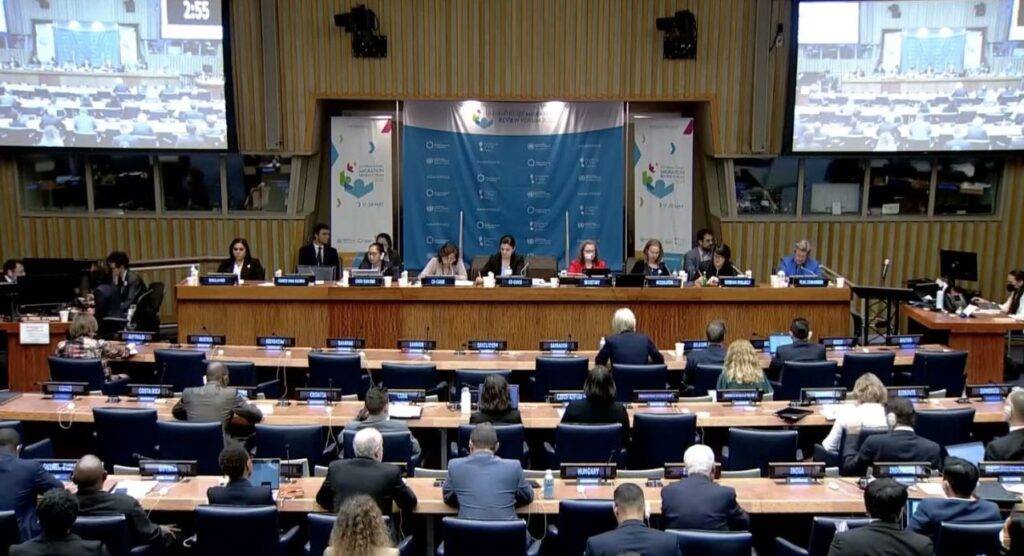
Since the adoption of the Global Compact for Safe, Orderly and Regular Migration (GCM) in December 2018, there has been an incredible amount of work accomplished to build on the adoption of the GCM under a whole-of-society approach, including by civil society groups and organisations, governments, local authorities, UN agencies and other stakeholders. For example, the UN Network on Migration was established in 2018 “to ensure effective, timely and coordinated system-wide support to Member States” in their efforts to implement the GCM. Building a functioning system of support at national, regional and global levels has been a key priority for the UN Network on Migration over the past four years.
Within the UN Network on Migration, IDC is proud to co-lead, with UNHCR and UNICEF, the Working Group on ATD which is tasked with promoting the development and implementation of non-custodial, human rights-based ATD in the migration context, in line with Objective 13 of the GCM. Working Group members include representatives of civil society organisations, migrant communities, young people, local governments, and UN agencies working on immigration detention issues and ATD across the world. The Working Group has developed a set of technical guidance and snapshots on ATD, and has steered, in collaboration with the governments of Thailand, Portugal, Colombia, and Nigeria, three global peer learning exchanges on ATD in recent years. IDC also co-leads the UN Migration Network Group working group on ATD in the Asia Pacific, as well as co-leads working groups at the national level to implement Objective 13 of the GCM. These efforts, such as linking national, regional and global initiatives, are part of a long-term movement to reduce and ultimately end immigration detention, and resulted in detention and ATD being key priorities for States to address during the IMRF (also view the IMRF press conference by the President of the General Assembly to hear more about the priorities, including ATD).
What actually happened at the IMRF?
During the IMRF, some States, including Colombia, Mexico, Germany, Thailand, among others, made pledges regarding ending child immigration detention and promoting best practice on this matter. IDC supported in drafting some of these global pledges, which was a process that exemplified the importance of sustained advocacy, collaboration and strategic government engagement at global, national and local levels, as well as the GCM principles of whole-of-government and whole-of-society approaches. The UN Network on Migration has launched The Pledging Dashboard to collate State commitments in the implementation of the GCM. Please review and see if your government has made a pledge!
With regards to immigration detention and ATD, both issues were featured quite extensively in State and multi-stakeholder discussions throughout the IMRF. This included commentary on concerns about the increasing and aggressive use of immigration detention in many regions of the world, as well as analysis of progress being made to promote ATD more widely and to work to end child immigration detention. In particular, child immigration detention was a centrepiece of detention-related discussion, and proved to be quite contested in the negotiations and eventual adoption of the 2022 IMRF Progress Declaration. While the GCM itself includes actionable commitments to work to end child immigration detention, some States attempted to now soften this commitment through the negotiations of the Progress Declaration. However, through the multi-level, multi-stakeholder advocacy of IDC and its partners at the IMRF, and the effort of some champion countries, the issue was indeed advanced in the Progress Declaration and included States determination to “consider, through appropriate mechanisms, progress and challenges in working to end the practice of child detention in the context of international migration.”
Key IMRF Takeaways
For IDC, the framework for moving forward beyond the 2022 IMRF will involve coordinating a multi-level agenda that uses national, regional and global momentum to make change on the ground and that centres the rights of migrants in all GCM implementation efforts. Particularly key for IDC in the next period, in our role as a convener of multi-level peer learning, is ensuring connection, coherence and coordination between national, regional and global efforts, which will allow us to enhance whole-of-government and whole-of-society approaches in the interest of change. The key takeaways from the 2022 IMRF that will support and guide our work across all levels include:
1. Global Visibility of Immigration Detention & ATD
Following much political turmoil in various global and regional processes over the years - addressing the use of immigration detention, working to end child immigration detention and the promotion of ATD are now solid components of the global migration agenda through the GCM. This is an important win, and resulted from the sustained strategic engagement and narrative shifting performed by many actors across various spaces. The next step is to use this global affirmation to enhance and leverage national action and change that results in tangible protection of migrant rights towards a world without immigration detention.
2. Multi-Level Peer Learning as a Key Approach
Through the UN Network on Migration Working Group on ATD and regional Platforms such as a the Regional State Platform in the Asia Pacific , IDC and its partners have coordinated and led peer learning processes for government actors over many years. IDC advanced this particular methodology across local, national, regional, and global levels through the development of communities of practice. This method has now been integrated into the Progress Declaration and officially recognised as a mechanism for analysing progress, “...calls on the Network to cooperate with Member States and relevant stakeholders to strengthen collaboration, peer-learning, engagement and linkages at global, regional, national and local levels.”
3. Centering Grassroots & Lived Experience Leadership
While purposeful efforts have been made to address the limited adequate mechanisms for engaging civil society in UN and global processes, particularly directly impacted people and communities - this is a systemic issue that requires a systemic solution. An entire mindset shift regarding leadership, equity, and accountability is needed to transform these systems and ensure meaningful participation and representation moving forward. As discussed in IDC’s article in the Spotlight Report on Global Migration, “Migrants give life to these issues, and are key to making this necessary transformation in collaboration with different stakeholders, including government allies. To end immigration detention we will need the same perseverance and determination as those who have survived detention. And if we work together with solidarity, understanding, and with a genuine desire to make a change, we can achieve it (page 19).”
Moving Forward
IDC alongside our members and partners in the coming period, will focus on ensuring implementation of the pledges made at the IMRF, expanding advocacy on ending immigration detention beyond ending the detention of children, continuing to connect local, national, regional and global agendas, facilitating and coordinating strategic peer learning spaces, and centering the leadership of people with lived experience of detention in all of our efforts.
The focus of the UN Network on Migration moving forward will be national implementation, including the development of national action plans by governments. As such, all of our roles in actualising the GCM are most important now that we are beyond the 2022 IMRF. As civil society, we must be ready to organise, engage, and advocate to ensure governments are living up to their GCM commitments on the ground. There will be an Annual Meeting of the UN Network on Migration in October 2022, where these priorities will be discussed and a new work plan for the Network will be developed with the input of civil society and other actors. Additionally, IDC aims to enhance the Working Group on ATD exchange space by redesigning it to more effectively connect national, regional and global levels in order to increase our collective ability to give life to the GCM. This will involve creating a more diverse and dynamic membership for the Working Group in the upcoming period. Additionally, we will continue with our work as co-leads of the ATD Working Group in the Asia Pacific and with the Regional Networks in other regions; and also continue co-leading relevant working groups and participating in UN Migration Network national efforts in selected GCM champion countries. Key to this agenda will be the effective coordination and connection between national, regional and global initiatives aiming to implement Objective 13 and promote ATD to ultimately end immigration detention. Please contact IDC Global Advocacy Coordinator Silvia Gómez [email protected] for more information and to explore possibilities for engagement.
Lastly, four months after the IMRF, IDC will host an event on 21st September 2022, to launch our global mapping report Gaining Ground: Promising Practices to Reduce and End Immigration Detention and our Asia Pacific report Immigration Detention and Alternatives to Detention in the Asia Pacific Region, which was developed in collaboration with the Regional UN Network on Migration for Asia and the Pacific under the umbrella of the UN Network on Migration.
REGISTER and join us to hear from experts at local, national, regional, and global levels about how to use this new research to scale up rights-based ATD and further advocacy to reduce and ultimately end immigration detention, including by supporting improved implementation of the Global Compact for Migration (GCM).
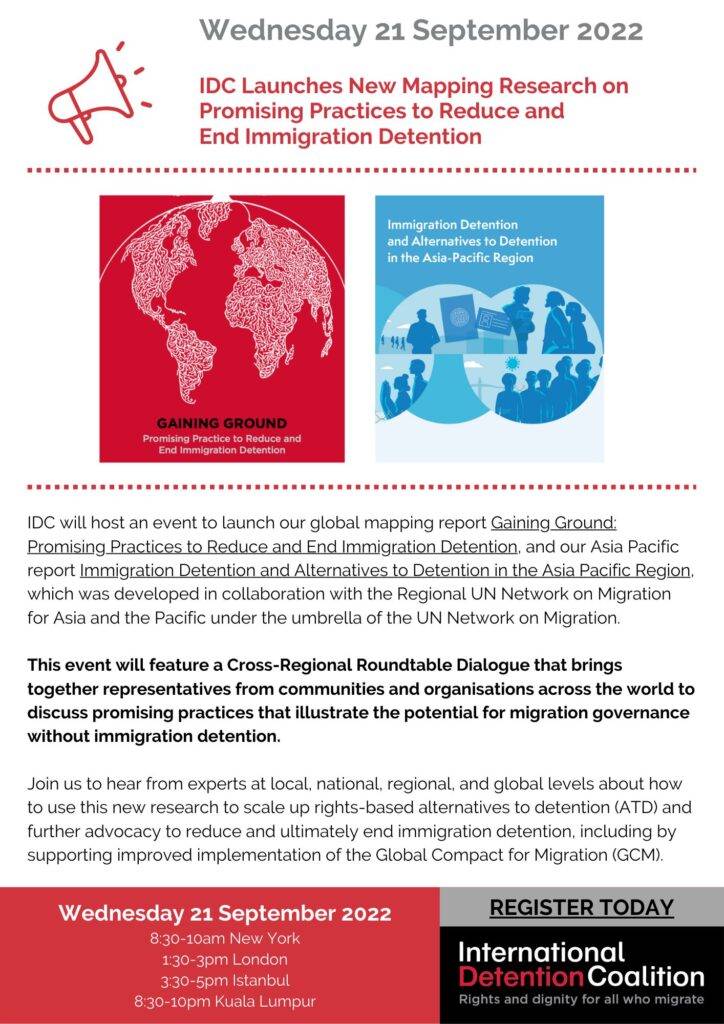
Written by Carolina Gottardo Executive Director, Silvia Gómez Global Advocacy Coordinator & Mia-lia Boua Kiernan Communications & Engagement Coordinator
Monitoring the Situation of Migrant Children in Chiapas, Tabasco & Veracruz, Mexico
IDC's Americas Regional Programme is currently undertaking research into the situation of migrant children on the southern Mexican border. One of the objectives of this study is to explore whether children are indeed no longer detained due to their migration status, following the 2020 legal reform which prohibited their detention in immigration detention centres.
The initial findings of the study were recently presented in Mexico City, focusing on the following two research queries:
Confirm whether local authorities are familiar with the Migrant Child Protection Protocol (CPR), created in 2019 by a federal commission.
Verify the implementation of the Migration Law reforms, which prohibit the detention of accompanied and unaccompanied children in detention centres.
The first step in the research was to request public information and official responses with data and input from authorities who participate in the CPR and who attend to this population.
This was followed by on-site visits to three southern Mexican states to conduct interviews with authorities regarding their work procedures, as well as their strengths and weaknesses. In particular, we aimed to cross-check official data with reality.
Findings
The visits corroborated that state and municipal authorities have limited knowledge of the CPR, although it is worth mentioning that all do have reception and care procedures. Nevertheless, these are far from what is stipulated in the CPR, particularly regarding issues around inter-institutional communication and coordination, and hence the importance of implementing state protocols.
There is also an urgent need to strengthen the State and Municipal Protection Attorneys, who have limited human and material resources with which to fulfil their obligations as established by law. This is evidenced by the fact that international agencies, such as UNICEF and UNHCR, are currently paying the salaries of members of the multidisciplinary teams who carry out best interests evaluations and determinations.
In addition, there is insufficient capacity in the Centres for Social Assistance (shelters) to receive children referred by the National Institute of Migration, which impedes full compliance with the reform. Although certain funding was made available towards the end of 2021, beginning of 2022, this has been insufficient and has only enabled the reception of children in order to immediately return them to their countries of origin, lacking a human rights protection perspective.
One of the main and surprising findings of the study relates to where children are held, given that there is insufficient capacity to receive them. They were found to be held in so-called “referral offices,” created by the Instituto Nacional de Migración (INM). Children remain there until their migration procedure has been resolved, or until referred to the protection authorities. In many cases, this is done without an assessment of their situation and therefore without a determination of their best interest. In flagrant violation of the Migration law reform, at least in the states in which the research is being conducted, these offices are located next to detention centres and also depend on the INM. This contravenes the reform that prohibits the enabling of spaces for the detention of children in order to avoid the claim that children are not being held in detention centres.
Finally, it is worth mentioning that interviews with the Guatemalan and Honduran consulates in the region revealed that while they recognise the importance of the reform, they are concerned by the lack of institutional capacity to provide reception and care for the total number of children.
All authorities appear to be aware of the practices and significant shortcomings in service provision, and expect support and advice. It is notable that the work of those authorities that have collaborated with and received support from civil society organisations including IDC has advanced considerably in comparison with those who are more resistant and have not been open to such collaboration.
These findings underpin a second phase of advocacy in the three states, aimed at ensuring better practices.
By Pablo Loredo IDC Americas Monitoring & Evaluation Officer
Members of Congress and Civil Society Visit Chiapas, Mexico
The State of Chiapas is located in the south-eastern part of Mexico and shares a border with Guatemala. Tapachula is one of the 118 municipalities in the State, and is mainly subject to transitory migration, although is also a temporary and permanent destination for those seeking better opportunities and to safeguard their lives.

The city of Tapachula was chosen by the Colectivo de Observación y Monitoreo de Derechos Humanos del Sureste Mexicano (Human Rights Observation and Monitoring Collective in Southeast Mexico), the Grupo de Acción para la No Detención de Personas Refugiadas (Advocacy Task Force to End Detention of Refugees), and the Migration Policy Working Group, to host members of the Mexican Congress in order to highlight the rights of migrants and people seeking asylum. This was addressed considering the following four issues:
- the militarisation of borders and migrant controls
- unrestricted access to human rights
- the situation of children, and
- detention due to migration status
Three days of meetings with government actors, United Nations agencies, academia and civil society, as well as visits to detention centres (detention centres or provisional centres), shelters, and government agencies, confirmed the need for the Mexican government to undertake legislative reforms on a federal and state level to ensure an inclusive policy of migration and asylum that includes respect for human rights.
Some of the main concerns highlighted by the visit included:
- The vulnerability of migrants and asylum seekers, particularly, children, women, and members of the LGBTQI+ community
- The impact of militarisation and the presence of the National Guard in migration control
- The absence of institutions responsible for guaranteeing rights in migrant control and verification spaces, such as the Attorney for Protection of Children, and the Mexican Commission for Refugee Assistance
- The limited availability of information and obstacles to accessing migration regularisation processes and the recognition of refugee status
The situation in detention centres continues to be of great concern as living conditions of migrants and people seeking asylum have deteriorated due to the lack of dignified conditions, the absence of information, and in particular, the isolation and lack of expedited responses to applications. Furthermore, the difficulties faced by civil society organisations in accompanying and monitoring detention centres was also evident.
Members of Congress have undertaken to consider the following issues in the next legislative session:
- Harmonise legislation under the strictest standards of human rights protection.
- Eliminate the faculties of the National Guard in matters of migrant control and surveillance.
- Guarantee that applicants for international protection are not detained while waiting for a resolution by the Mexican Commission for Refugee Assistance.
- Expand the budget for the child protection system to guarantee the evaluation and determination of the best interests of the child, as well as the development of plans for the restitution of individual rights, under the highest standards of protection.
- Strengthen the response capacity of entities such as health, work, education, justice, and civil registry, amongst others, to include the migrant and asylum seeker populations in actions proposed by state and municipal governments.
- Establish efficient mechanisms of inter-institutional and transnational collaboration and referral between authorities, United Nations agencies, and civil society on a regional level.
- Promote and/or strengthen parliamentary controls that provide members of Congress with information on compliance with legal frameworks passed by Congress, particularly regarding migrant children.
A similar visit will be conducted in September 2022 in Ciudad Juarez, Chihuahua, with four points of reflection and observation:
Mexico-United States binational policy
National and Public Security versus Human Security
Migrant children and asylum seekers
Accommodation
The Migration Policy Working Group believes that, on both a federal and state level, the Mexican Congress should modify legal frameworks to guarantee measures that ensure such human rights violations are not repeated. This is crucial given the recent events that occurred in the States of Chiapas and Texas, where migrants, seeking alternatives to avoid migration enforcement, were faced with death and desolation.
Written by IDC Partner Melissa Vertiz of the Migration Policy Working Group in Mexico, of which IDC is also a member
5 Years of the European ATD Network: Growing & Learning Together
In April 2022, members of the European ATD Network met for the first time since the outbreak of the COVID-19 pandemic in 2020. Five years after the Network’s creation, its goal – to reduce and end immigration detention by building evidence and momentum on engagement-based alternatives – is more relevant now than ever before. Hannah Cooper, IDC’s Europe Regional Coordinator, reflects on some of the key takeaways from the meeting.
Recent years have shown increased momentum around alternatives to detention (ATD) in Europe, with a number of countries introducing legislative changes that have codified – and, in some cases, expanded – their use. Promising practice has taken the form of improved screening and assessment procedures, enhanced safeguards for people in vulnerable situations, introduction of legislation and policy that prohibits detention of certain groups, and the piloting of innovative ATD approaches (see IDC’s latest report released in May, Gaining Ground, for more promising practice in Europe and beyond).
Yet despite some steps forward, the need for effective, rights-based ATD remains great. Detention continues to be a key part of Europe’s toolbox when it comes to migration management and the EU Pact on Migration and Asylum is likely to result in increased use of detention – including arbitrary detention – due to its focus on border procedures and the push to increase and accelerate returns. While EU law states that detention should only be used as a measure of last resort and in very specific circumstances defined by law, detention is frequently applied as a default. Even where alternatives are used they tend to focus on enforcement-based approaches, which apply restrictions and conditions to control and track migrants, refugees and people seeking asylum. Such measures allow governments to monitor individuals and apply sanctions for non-compliance, but fail to support people in working towards resolution of their case. The conditions of such enforcement-based ATD are often unrealistic and put overly harsh burdens on migrants regarding reporting and bail conditions. In contrast, ATD based on engagement and case management in the community are more humane, collaborative, and effective in supporting people to work towards finding a temporary or permanent migration outcome, which can include regularisation, moving to a third country, or voluntary return.
It was with this in mind that the European Alternatives to Detention (ATD) Network came together in late April for our tenth meeting. Due to the pandemic, this was the first time that network members had met in person in over two years. The meeting’s overall purpose was therefore to provide network members from across Europe with the opportunity to gather after this long hiatus, review our progress to date, develop a joint understanding of the current context, exchange on priority areas and challenges, and develop a collective roadmap for the coming phase.
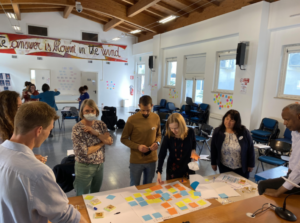
Working together to implement and advocate for rights-based ATD
Since 2017, the European Alternatives to Detention Network has been working to bring together organisations implementing case management-based ATD across Europe. The Network has grown from its initial four pilot projects, and now includes eight organisations in seven countries across Europe. Five years on, the goal of the Network – to reduce and end immigration detention by building evidence and momentum on engagement-based alternatives – is more relevant than ever.
The meeting in April provided Network members with a space to reflect, troubleshoot, and problem solve together. Our approach is constantly evolving – there are always new things to learn, and ways in which we can improve our delivery of rights-based ATD, based on the principles of holistic case management in the community. Given this, below are some reflections on the key takeaways from the meeting:
Learning together is key to growing together.
When the Network was formed in 2017, there were very few examples of case management based ATD happening. Detention Action’s Community Support Project (CSP), which works with young migrant ex-offenders who have experienced or are at risk of long-term immigration detention, was used as inspiration for other members, who initially had little experience in case management. The CSP was designed in line with the principles of IDC’s Community Assessment and Placement model, a holistic framework for case management that is drawn from social work principles. Today, through learning and working together, Network members are leading best practices on the provision of holistic case management, including when it comes to ATD.
Change happens, but slowly.
One of the network’s key priorities since its inception has been to influence ATD policy and practice across Europe. Network members are in a particularly strategic position to do this; their pilots work with groups experiencing some of the most severe vulnerabilities, and their ability to speak with policymakers from this on-the-ground perspective – combined with a solutions-focused approach – is one of the network’s unique strengths. Thanks in part to the advocacy of Network members, we have seen concrete impact – including the establishment of a specific role focusing on ATD and the adoption of the Screening and Vulnerability tools in Cyprus, and a partnership set up between the UK Home Office and non-governmental actors to test ATD approaches. However, change is slow and rarely linear. The Network is also only one part of a large ecosystem of change; as one participant put it, “we need to stop thinking we can change the world alone.”
Our work must always centre around lived experience leadership.
One of the central themes of this year’s Network meeting was how to ensure meaningful and responsible participation of leaders with lived experience of detention – not just as ‘users’ of services but also in leading the co-design and implementation of our pilots and projects. For all Network members, this is a current priority – and we discussed how resources can be put in place to ensure that leaders with lived experience are equal partners in the development of rights-based ATD, and can be supported to participate. The newest Network member, Mosaico, was established with this commitment in mind and their refugee-led approach has meant that migrants and refugees involved in the project are themselves active participants in its design and conception. Moving forward, the Network will be looking to further explore how we can promote lived experience leadership, in line with our two-year scaling plan.
We can see the impact of our projects, but we must do better at showing it to others.
Every day, Network members see the impact of their work. Whether this be ensuring that somebody is released from detention into a community-based pilot, or helping them to access the legal assistance that they were not able to obtain in detention - our projects have a concrete and visible positive impact on the lives of those at risk of immigration detention. We know, moreover, that ATD are better for people’s health and more cost effective than immigration detention, as well as being a far more effective and dignified way to support people to work towards resolution of their migration cases. And the evaluations from our projects (see here and here) present some of the strongest evidence for the success of ATD – with implications not just in Europe, but also for developing and enhancing ATD globally. Yet Network members agree that we must do better at showing the success of our projects as a whole, particularly to governments and policymakers but also to civil society allies, in order to provide concrete evidence that demonstrates the impact of effective, rights-based ATD.
Going forward, the Network will continue to evolve and adjust our approach in order to learn and grow together – finding ways to effect change, show impact, and shift power to those with lived experience. And by doing this, we hope that we will bring the Network one step closer to achieving our goal to reduce and ultimately end detention in Europe, allowing people on the move to live with freedom, rights, and dignity.
IDC Asia Pacific Programme Spring Event Round-Up
In May, during the International Migration Review Forum (IMRF) IDC was excited to see Thailand’s global leadership, and welcomed Thailand’s pledge to improve the lives of people who migrate. Alongside progressing birth registration for migrant children and universal health coverage, Thailand pledged to effectively implement ATD for migrant children and work towards ending child immigration detention. Thailand also pledged to engage the public towards ending discrimination and stigmatisation of migrant communities. IDC will continue to work in collaboration with Thailand to achieve these pledges.
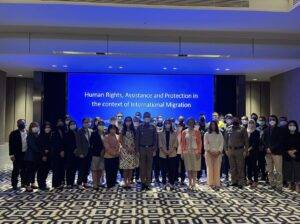
Further in May, IDC’s Asia Pacific Programme Officer, Min Jee Yamada Park, presented at the ASEAN Workshop on Women and Children in the Context of Migration, and discussed key findings from IDC's latest research report which maps the use of immigration detention and alternatives to immigration detention (ATD) in 19 countries across the Asia-Pacific region. You can find the new report here.
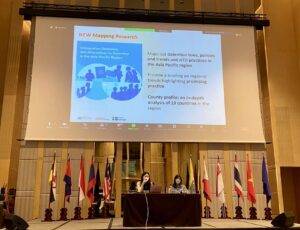
Mic Chawaratt, IDC’s Southeast Asia Programme Manager also took the stage at the ASEAN Workshop on Women & Children in the Context of Migration to reflect on the IMRF and the momentum it sparked for migration issues at regional and national levels. Mic highlighted that ending child detention was a key priority issue that could help GCM vision become a reality, and that the ASEAN Declaration of the Rights of Children in the Context of Migration and its Regional Plan of Action reinforce the GCM agenda. Mic urged ASEAN Member States to use ATD as a vehicle to end child detention in the region and further suggested how ASEAN governments and stakeholders can engage ASEAN mechanisms as well as the GCM to fulfil the rights of migrant children.
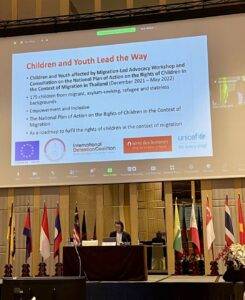
Lastly, Mic also represented IDC at a panel on 'Human Rights, Assistance and Protection in the context of International Migration,' which was co-organised by IOM Thailand, OHCHR Asia-Pacific Office, Thailand’s Immigration Bureau, the Canadian Embassy to Thailand, and the US Embassy to Thailand. Mic highlighted lessons from the implementation of the ATD-MOU and community-based case management in Thailand, and shared recommendations for the Thai government to strengthen laws, policies and processes to end immigration detention of children and their families. You can find the new report here.
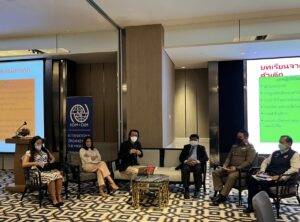
IDC also proudly signed the joint statement coordinated by the Asia Pacific Refugee Rights Network (APRRN) on World Refugee Day: Civil Society Calls for Urgent Measures to Protect Uyghurs at Risk of Refoulement.



